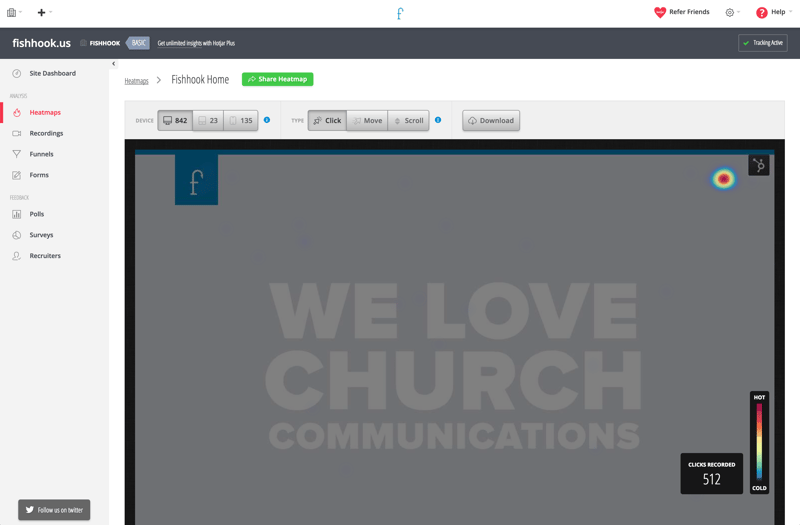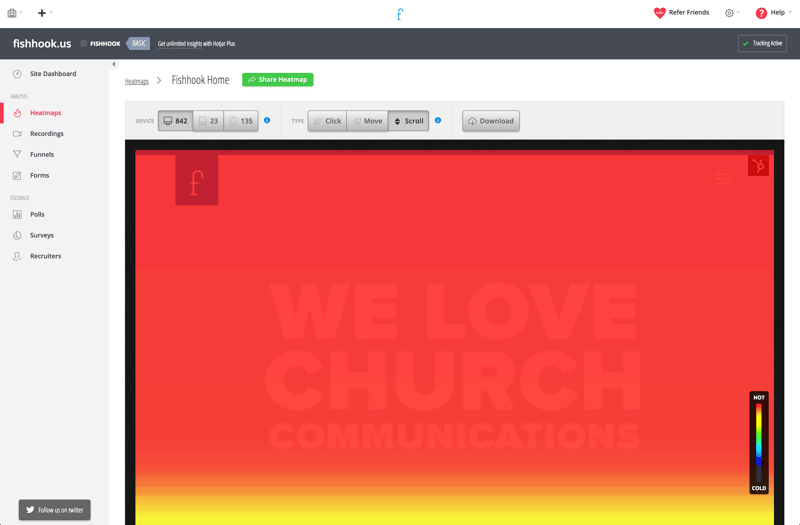Hotjar is better suited for determining how a user interacts with specific pages, so you can make adjustments to your content and website.
Have you heard about Hotjar? It’s a new website analytics tool that works on most web platforms – WordPress, HubSpot, Ekklesia360 and more – and can be used to understand how your web and mobile site visitors interact with content on your pages.
You may be thinking, “I’m already using an analytics platform.” That is great! Keep it up! But I would recommend using Hotjar in addition to other analytics platforms. For example, Google Analytics gives great high-level analytics and some more specific analytics, which is good for making strategic decisions for the website as a whole. However, it doesn't quite get into the specifics of how visitors (or users) are interacting with your pages.
Hotjar, on the other hand, is better suited for determining how a user interacts with specific pages, so you can make adjustments to your content and website organization based on:
- Your users’ expectations of how the website works
- Your expectations of how users should use the website
- Your priorities which informs the positioning of your website content
In working with Hotjar, I’ve discovered two of my favorite features. I like the Click Heat Map because it gives you rich information about user behavior at a quick glance. It's easy to find out if users are actually clicking where they “should” be clicking and also gives some valuable data regarding elements that should be made into clickable links because the user intuitively believes they are clickable.

I also like the Scroll Heat Map because it is clear how many users are getting to certain blocks of content on the page. For instance, if someone says that the most important element on the homepage is the most recent sermon, but Hotjar shows that it is in an area only viewed by 15% of the website’s users, the church is able to make better decisions regarding what content is located in what position on the pages.

I think the potential of Hotjar is huge. Here are three ways that the Church could and should use Hotjar:
- The basic Hotjar analytics allow a church to see how a user is actually interacting with their web content. Before Hotjar, we were making very well-educated guesses. They were still guesses though. But with Hotjar, a church can see exactly how users are using their website, so they can make appropriate content decisions.
- Before a website redesign or update, a church could use the surveying tools to find out what content users are really interacting with. A church could also determine what content people are struggling to find and missing altogether, so they can strategize how to help users find the content with which they would like to interact. These insights also give the congregation some ownership of the web project; sometimes people just want to feel like they were heard, even if their suggestion doesn't come exactly to fruition.
- The funnels tool could be really impactful for a church who is trying to be strategic with user behavior on the website. Theoretically, we would like our users to move forward down a path (or paths) on the website. The funnels give you the ability to track how effective your content placement is and how often it sends the user down the “correct” path.
